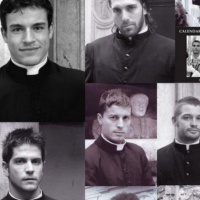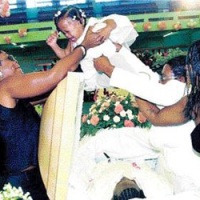a.whittam-smith@independent.co.uk
The Anglican and Catholic Churches have finally realised they must change to survive. But is it too late?
The problem is not adults leaving the church: it is their children never going at all
Have the Christian churches got it at last? Have they understood that it will soon be too late to halt the slow yet relentless decline they have experienced in this country, and on the continent of Europe, for many years? Yes, they are, finally, beginning to face up to reality. For example, the new Pope, Francis, has just published a truly remarkable document, “Evangelii Gaudium” or “The Joy of the Gospel”, in which he asks the Catholic Church to embark upon a fresh chapter of evangelization, and where he describes in great detail how this should be done. And more quietly, but no less insistently, the new Archbishop of Canterbury, Justin Welby, is engaged in the same task.
Just a word, first, about where one should direct one’s gaze. It is natural to bracket the Pope and the Archbishop together, but so great are the structural differences between the two Churches that this can mislead. In the Roman Catholic Church, everything flows down from the top, whereas in the Church of England authority is widely dispersed. So Popes issue lengthy documents, often of a high quality, in this case an “apostolic exhortation”, and set a new direction. Whereas in the Church of England, archbishops, bishops and the clergy just get on with things. To see what this means in practice, listen to Bishop Stephen Cottrell addressing the Chelmsford Diocesan synod last month. His speech, “Evangelizing Effectively: the next steps”, cannot match the breadth, nor the wonderful biblical language of Pope Francis’s exhortation, but it is directed at the same purpose in a very effective and practical manner.
The Pope first looks with an unforgiving eye at the barriers to missionary ministry that the Church itself erects. In his exhortation, Pope Francis says “I do not want a Church… which… ends by being caught up in a web of obsessions and procedures.” Surprisingly, he rails at the “excessive centralisation” which, rather than proving helpful, “complicates the Church’s life and her missionary outreach”. He warns that “mere administration can no longer be enough”. Pope Francis despairs of “the gray pragmatism of the daily life of the Church, in which all appears to proceed normally, while in reality faith is wearing down and degenerating into small‑mindedness”.
He calls this “A tomb psychology”, which slowly transforms Christians into “mummies in a museum”. And in a thrust that could as well be aimed at the Church of England as well as at the Church of Rome, he notes that in some people we see “an ostentatious preoccupation for the liturgy, for doctrine and for the Church’s prestige, but without any concern that the Gospel have a real impact on God’s faithful people and the concrete needs of the present time. In this way, the life of the Church turns into a museum piece or something which is the property of a select few.” Ouch!
Instead the Pope dreams of a “missionary option”, that is, a missionary impulse capable of transforming everything, so that the Church’s customs, ways of doing things, times and schedules, language and structures can be suitably channeled for the evangelization of today’s world. Because he casts care for self-preservation aside, he also emphasises the need to act without “hesitation, reluctance or fear”.
In a passage that will please Anglicans, “Evangelii Gaudium” has high praise for the humble parish, with its church-building, its vicar and its committed lay-people working locally. While certainly not the only institution that evangelizes, if the parish proves capable of self-renewal and constant flexibility, “it continues to be the Church living in the midst of the homes of her sons and daughters”.
But with regard to missionary endeavour, there is a key difference between the Church of Rome and the Church of England. The Pope’s message is a call to make a fresh start, whereas for the Church of England, a renewed focus on evangelization is a work in progress that was begun about 10 years ago. The English initiative proceeds along two parallel routes. The object is to establish either what are called “fresh expressions” of church or to “plant” new churches.
These new congregations are different in ethos and style from the local church that set them up, because they aim to reach a different group of people. They are created primarily for the benefit of those who are not churchgoers. They may take place in cafes, at home, in a church building that has been re-opened after closure, during the week rather than on Sundays; and sometimes they are led by pioneer priests or by trained youth workers. And this is working. Some three quarters of those who participate had either given up attending church or had never been before.
So re-evangelization is easy if you know what to do? Not at all. It is extremely, dauntingly difficult. The crux of the matter is this. The problem is not adults leaving the church; it is their children not following their example. In short, if the Churches cannot recruit young adults, their decline will go on. But the problem is now understood, it has been measured and complacency has evaporated. In other words, a start has been made.



 There are fears for HS2’s impact on Chetwode’s “very fine but vulnerable” church
There are fears for HS2’s impact on Chetwode’s “very fine but vulnerable” church
 The Church says it is not opposed to HS2 in itself, but wants changes to the Bill behind it
The Church says it is not opposed to HS2 in itself, but wants changes to the Bill behind it







